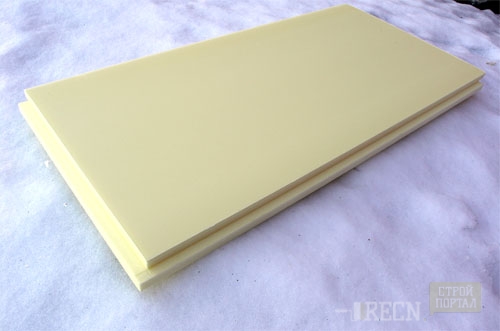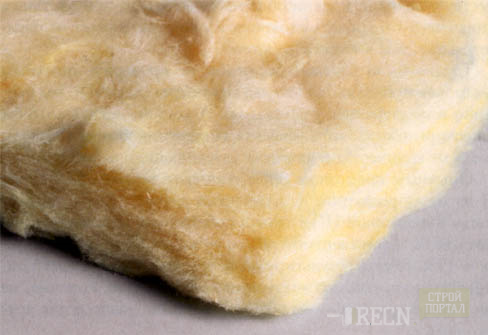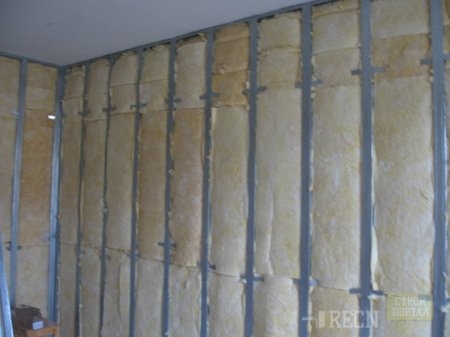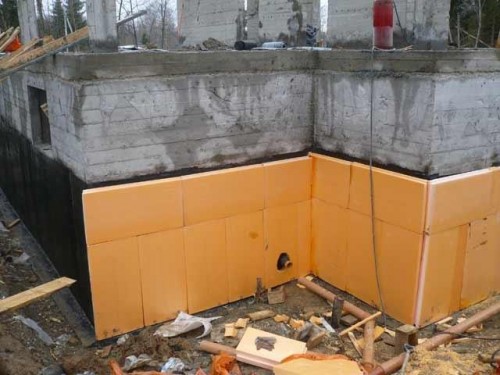
Wall insulation celled with their own hands Insulation,Construction
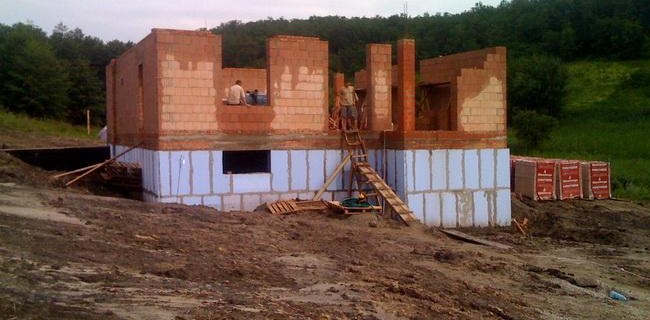
For a long time we went to the summer of those times when the basement was used, exclusively, as a cellar, to store edible reserves for the winter or, as a warehouse, to save any domestic debt in case "and suddenly needed." Now the underground space accommodates garages, saunas, wine cellar and other economic components of the dwellings of a modern person. Operation of basement areas allows you to save valuable expanses of ground dwelling, equip spacious and well-lit rooms for living rooms, bedrooms, etc.
New needs dictate new requirements for basement: they should be warm and dry. In many cases, the device of the basement walls occurs with the involvement of qualified specialists. But in simple situations, when the groundwater does not go too close to the earth's surface, the warming of the basement walls can be produced and with their own hands.
Content
Wall insulation basement
The proper holding of this event guarantees the owners of the house to reduce the cost of payment of the coolant from 5 to 20%. The basement walls can be isolated both on the inside and with outdoor.
Insulation for the walls of the basement
The competent selection of insulation is already half of the success in the equipment of such specific premises. What requirements should be extended by studying the qualitative characteristics of a particular material?
- Resistance to moisture, the preservation of unchanged properties is even in an unfavorable environment.
- The ability to resist possible compression and pressure of the thickness of the soil masses.
- Sufficient strength and durability.
What materials are popular among professional repairmen and beginner builders?
- Extruded expanded polystyrene foam (Special foam). It is distinguished by closed hermetic pores, which increases its strength, thermal conductivity and increases hydrophobicity. The most popular material for today: light, does not rot, it does not crumble, environmentally friendly, with wonderful thermal insulation characteristics and a long service life subject to the use rules (parallel to carry out waterproofing). In addition, foam plates are easily trimming to give the desired shape and sizes. But this material also has disadvantages. Another minus is flammable. The use of polystyrene foaming near the location of the wiring should be avoided. In addition, when heated, it can exude an unpleasant smell.
- Foamed polystyrene foam (ordinary foam). Similar to extruded foam, but can absorb moisture, i.e. It needs additional waterproofing. The strength of this material is three times lower than that of the extruded analogue. It is very loved by rodents, therefore, if any, it is necessary to carry out premises. We are widely used in mind low cost.
- Penophol(foamed polyethylene + aluminum foil). Sometimes used as a complementary insulation layer laid on a foam.
- Polyurethan. Such a heater is applied in several layers by the method of fine spraying. It is very convenient for the processing of walls, gender and ceiling, durable. Hardening for 20 seconds, it creates a fairly smooth coating without voids, seams and joints, penetrating into the most hard-to-reach places. In addition, the use of this insulation does not imply carry out moisture insulating activities. The only but serious drawback is high cost, compared with other insulation. And yet, it is necessary to apply special equipment and a qualified master.
- Glasswater. Material from small fibers of glass production waste with a rather low thermal conductivity indicator, relatively inexpensive. Of the disadvantages - the loss of heat capacitance properties during wetting (the need for reinforced moisture insulation), flammability. Along with this, when working with glass, special attention is paid to protect the eyes and respiratory tract from small fiberglass. Not recommended for outdoor insulation.
- Mineral wool. It visually looks like a glass gamble, but has a different origin. It is obtained in the process of complex technology of smelting basalt rocks. Properties of this insulation are identical to the properties of glass gambles.
How to insulate the walls of the basement without resorting to assistance? We will try to figure out.
Preparation of walls to thermal insulation
- Carefully explore the condition of each particular wall.
- Clean the surface from pollution.
- Get existing cracks and chips with sealant.
- Combine irregularities.
Wall insulation basement from the inside
The advantage of this type of insulation is the preservation of heat not only underground rooms, but also the whole house as a whole. Although this is not a very popular technology. The snag is that the basement is a rather raw place. Its inner heat insulation threatens the formation of condensate, and, therefore, entails the additional impact of evaporation on the insulation. The material loses its valuable properties and deformed. Given this circumstance, the process of internal insulation can be divided into two stages:
1. Waterproofing - A number of actions aimed at reducing humidity indoors and its impact on insulation and items that will take their place in the basement in the future.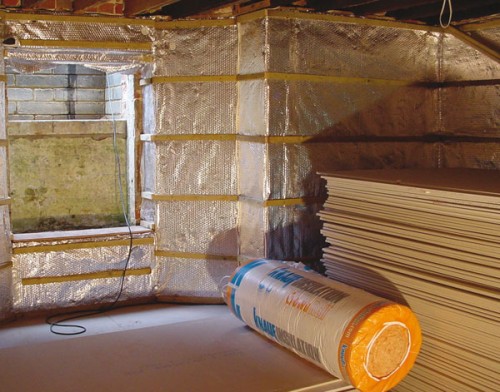
Methods are most popular among professionals:
- Impaving various compositions based on cement.
- "Penetrating waterproofing."
- Horizontal cut-off waterproofing by introducing water-repellent compositions.
The latter method, of course, requires third-party help of specialists, but the first two can be used to apply themselves.
Caution techniqueit implies the creation of an elastic layer with a thickness of several millimeters. For this, the two-phase mixture is applied to the surface of the wall with a rigid brush and rolling with roller.
Penetrating waterproofing -this is a set of measures using the compositions like "Calmatron", Penetron, etc.
For example, a mixture of hydro-S (b, in, y, n) is a dry mixture of portland cements, sedied sand and various chemical supplies. It happens several options: b - quick-hardening, in - waterproof, y - universal, n - antifungal.
Such compositions are creating miracles! After their use, "filling" with special insoluble crystals of micro cavities, tubules and pores in the body of concrete foundation facilities occurs. In this matter, the main thing is to clearly execute instructions and manufacturer's recommendations.
But what about the problem of the formation of condensate and excessive moisture? Understand the ventilation holes in the base with a 5-thimeter interval to ensure the circulation of air masses and the discharge with them evaporation to the street.
2. Heat insulation - Measures that guarantee the safety of heat in underground rooms, regardless of the thickness of the basement walls.
The easiest and most common version of insulation from the inside is a foam opping:
- Produce waterproofing (any of the methods described above).
- Place the 5-tisantimeter layer of foam flames, impregnated with adhesive mortar from the bottom up.
- Fix the foam plastic dowels with wide caps in the center and in the corners of the plate to increase the life of the insulation layer. Although many are limited to one gluing.
- Places of junctions between the plates bloom foam. Try to minimize the number of seams. It should also be taken into account that the fact that than the smallest wall of the basement, the less will be formed in the process of emptiness and gaps between the surface and the insulation layer.
- To create a supporting reinforcement layer in foam plates, press the construction grid.
- Cover all this by another layer of glue.
- Separate the surface after complete drying of the adhesive layer.
- To achieve the completed view of the room, we treat the walls with plaster and paint them.
Wall insulation basement outside
It may seem that the outer insulation of the basement walls is a useless spending of time, effort and money. But, in fact, the insulation of the basement outside is perhaps more important than internal isolation. Here the walls are protected from direct impact of atmospheric phenomena. Those.
Outdoor insulation of the basement with the use of foam
This material firmly conquered the championship among insulating materials during the arrangement of basement. His advantages are described above. This is moisture resistance and ability to withstand the load of the soil than they do not differ, for example, clamzite and mineral wool. 
The technological process is similar to internal works.
- The same waterproofing is the first layer.
- Heat insulation - second. The insulation is glued along the entire perimeter of the building. Next, the process is somewhat different from internal insulation:
- Treat the mastic to the part of the structure that "recessed" under the ground.
- Next, suck it with the soil, thereby creating an additional cordon on the way of the cold. Considering this feature, the insulation of the walls of the basement from the outdoor side is better at the construction stage. Although, in practice, it happens more often: a ready-made building is beginning to warm, where part of the basement walls are hidden under the ground.
- apply plaster on the above-ground part of the wall, covered with foam and close with finishing panels (or carry out another finish at your discretion).
Outdoor insulation of basement rolled materials
Another one of the available methods of insulation of the basement walls is their covering glass painter or a bitumen rubberoid, used in conditions of relatively dry soils:
This method is applicable only for outdoor work. Internal insulation with such materials will not bring the desired effect, due to the increased humidity, the sheets of a roll coating simply will be twisted.
Other options for outdoor insulation basement
Pre-opened underground foundation Cover with a glass mesh or sow the hollow brick. Effective will also be additionally made along the walls drainfast.
If the house is equipped with a multi-layer foundation, then as a heater for the basement, mineral wool can be applied. But this material needs to ensure protection against deformations.
Subtleties technology insulation walls of basement
- To start events for the warming of basement walls, foam on the outside, it is better to wait for a clear dry weather.
- Insulation work should be carried out along with the actions to improve waterproofing.
- Choosing mastic, for thermal insulation work with the use of foam, special attention is paid to its moisture-repellent characteristic. There are two ways to apply this substance: point (partially) and coated with the entire surface being treated. The last way is more popular, because A uniformly applied solution will become another protective layer for the insulation itself from the destruction caused by the pressure of the soil layer.
- The edge of the glued insulation should perform half the meter above the ground level.
- In the process of insulation of the walls of the basement using any insulation, it is advisable to carefully close the places of joints that create cold bridges.
Now you know a lot about the inner and outer insulation of the basement walls. Conduring the arrangement of underground premises, you should also think about the insulation of floors and overlaps. Do not forget also about ventilation and drainage system. But that is another story…




